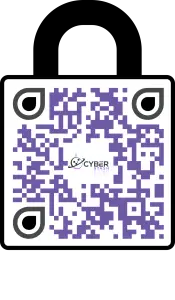Cybersecurity Lessons and Tips
Scan with Your Phone to Stay Ahead of Threats

Subscribe to Security Advisories
Stay Ahead of Cyber Threats Get timely security advisories crafted by CyberStash experts. Receive practical insights, emerging threat updates, and actionable steps you can use right away to strengthen defences and reduce risk — so you’re always ahead of attackers.

Join Our Next Cybersecurity Webinar
Stay Ahead of Cyber Threats Hear directly from experts on the latest attack techniques and defence strategies. See real-world demos, learn proven countermeasures, and walk away with practical tactics you can apply immediately to improve your organisation’s resilience.

Download the X-in-XDR Whitepaper
Stay Ahead of Cyber Threats Understand what XDR really means for your business and why traditional tools leave gaps. This whitepaper shows how to close those gaps, measure outcomes, and make smarter security investments — insights every IT and security manager can put to use.
Sharpen Your Tradecraft: Lessons for Cyber Security Analysts
An Introduction to Digital Forensics
and Incident Response (DFIR)
An Introduction to
YARA
YARA (Yet Another Recursive Acronym) is a powerful and versatile tool in the arsenal of cybersecurity professionals. Developed by Victor Alvarez at VirusTotal, YARA has become indispensable for creating custom rules to identify and classify malware based on specific patterns and characteristics. This guide provides a detailed overview of YARA, including its importance in cybersecurity, a step-by-step tutorial, and a real-world example of how YARA can be used to detect malware.
Building a Sophisticated
Cybersecurity Team
In today’s digital landscape, cybersecurity is a strategic imperative, not just a technical requirement. Crafting an effective cybersecurity team involves more than filling roles; it requires a strategic framework that aligns with business goals and adapts to evolving threats. This guide integrates key insights into structuring your cybersecurity team, optimizing budget allocations, and ensuring sustainability, all while highlighting thought leadership and practical considerations.
Comparing Advanced Threat
Detection and Response Solutions
An Introduction to
Application Whitelisting
An Introduction to
Cyber Threat Hunting
Introduction to Cyber Threat
Intelligence (CTI)
Introduction to Endpoint Detection
and Response (EDR)
Introduction to Extended Detection
and Response (XDR)
An Introduction to
MITRE ATT&CK
The Complex Landscape of
Security Information and Event Management (SIEM)
Understanding
EDR Evasion Techniques
Defending Against
Web Shells
Adversaries frequently deploy web shells to establish persistent access to compromised web servers, leveraging them as footholds for deeper network infiltration. A web shell is a malicious script planted on a web server, allowing attack ers to execute arbitrary system commands remotely. These scripts provide adversaries with a command-line interface or predefined functionality to control the target system, often mimicking legitimate administrative tools to evade de tection.
While commonly associated with server-side scripts, web shells may also incorporate client-side components for more advanced interactions. Cyber threat actors have increasingly relied on web shell malware to facilitate computer net work exploitation, given its adaptability and resilience against traditional security controls. Once embedded, a web shell enables attackers to execute commands over standard web protocols such as HTTP or HTTPS, blending malicious activity with normal network traffic.
The Complex Landscape of Security Information and Event Management (SIEM)
Security Information and Event Management (SIEM) systems have long been positioned as a central component of an organization’s cybersecurity arsenal. Designed to provide comprehensive visibility and control over security events, SIEM solutions aggregate and analyze log data from various sources to detect and respond to potential threats. While SIEMs offer a broad range of capabilities, their complexity and resource demands present significant challenges, making them less suitable for many organizations. This article explores the nature of SIEM systems, their major capabilities, the inherent challenges of their implementation and management, and why they may not be the best fit for every organization.